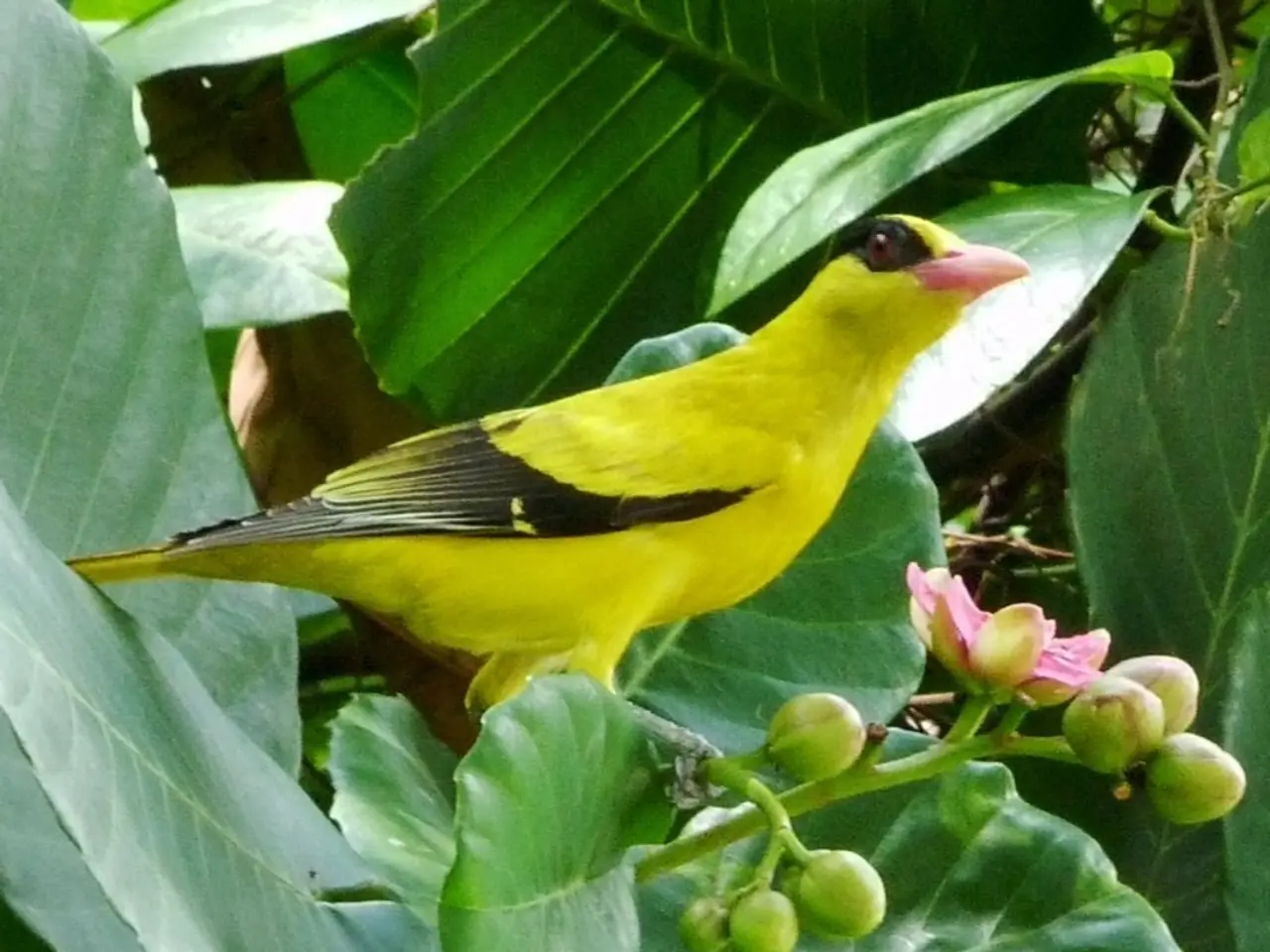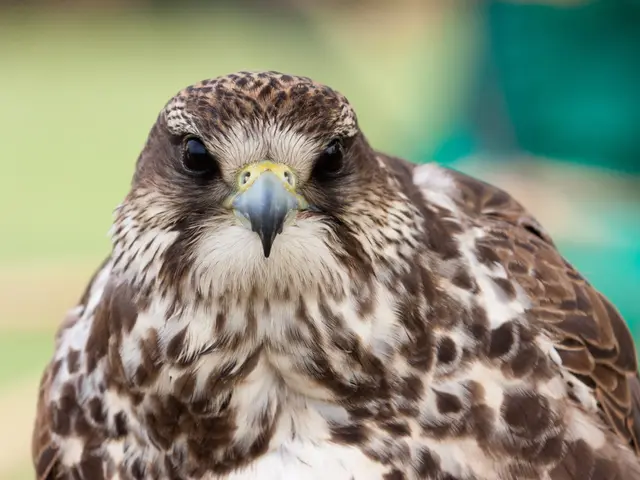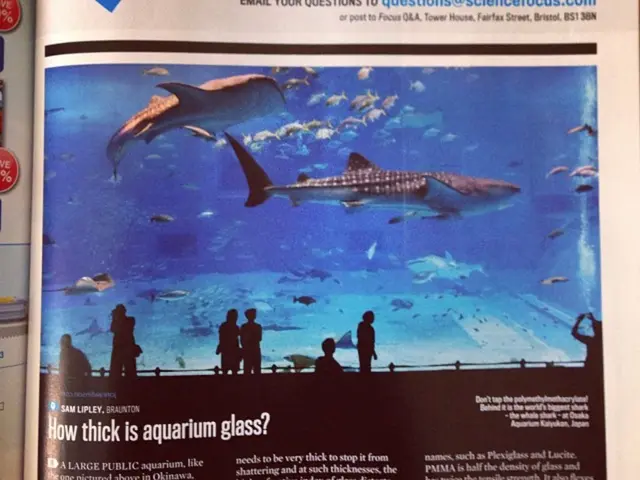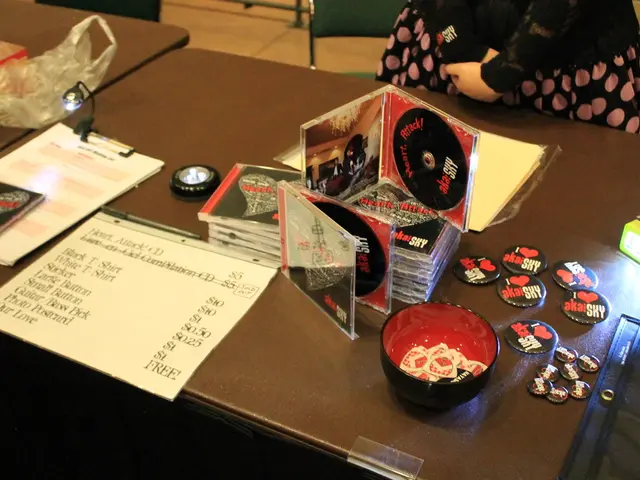Discover 9 Attractive Hummingbird Species That Could Frequent Your Backyard
Attracting Hummingbirds to Your Garden: A Guide to Creating a Vibrant Haven for These Incredible Pollinators
Hummingbirds are captivating creatures, known for their vibrant colours and rapid flight. These small birds are a delight to have in any garden, and attracting them can be a rewarding endeavour. Here's a guide to help you create a hummingbird-friendly garden.
Firstly, it's essential to understand that hummingbirds are primarily attracted to flowers that are tubular in shape and brightly coloured, especially red and orange hues. These flowers provide easy access to nectar for their long beaks and tongues.
Planting the Right Flowers
Different species of hummingbirds have their preferences. For instance, Ruby-throated Hummingbirds in the U.S. favour long tubular red flowers like the cardinal flower (Lobelia cardinalis), which blooms from July through September. Rufous Hummingbirds, on the other hand, prefer flowers such as bee balm, penstemon, columbine, coral bells, and the Lucifer Crocosmia. Black-chinned Hummingbirds are generally attracted to trumpet vine and trumpet honeysuckle.
In addition to these, low-maintenance perennials favoured by hummingbirds in general include catmint and cardinal flower (Lobelia cardinalis).
For those living in the coastal strip of California and southern Oregon, planting fuchsia, monkey flower, and scarlet runner bean can invite Allen's hummingbirds to your yard. Alpine favourites like larkspur, red columbine, and silene will attract Broad-tailed hummingbirds, thriving at elevations as high as 10,000 feet in the Rocky Mountains.
Creating a Garden with Staggered Bloom Times
To make a garden more hummingbird-friendly, plant a variety of flowering plants with staggered bloom times. This ensures that there's always a source of nectar available.
Adding a Water Feature
A small fountain or birdbath can also attract hummingbirds to your garden. These birds are known to drink and bathe in water sources.
Supplementing with Feeders
Hummingbird feeders filled with a simple sugar-water solution are a great way to supplement natural nectar from flowers, especially during migration periods when natural sources may be scarce.
Avoiding Pesticides
It's important to avoid using pesticides in your garden, as these can harm hummingbirds. Instead, consider organic methods to control pests and weeds.
Attracting Bugs
Attracting bugs that hummingbirds like is also important, since nectar isn't sufficient for most birds' diets. Planting a variety of flowers can help attract beneficial insects.
In summary, to attract various hummingbird species including Ruby-throated, Rufous, Black-chinned, Allen's, and Broad-tailed, planting a mix of native, tubular flowers primarily in red and orange colours will be effective. Avoid deadheading late-season blooms since hummingbirds rely on nectar from even faded flowers during migration periods. By following these tips, you can create a vibrant and hummingbird-friendly garden that not only brightens your yard but also supports these incredible pollinators.
- To support a diverse range of hummingbird species in your garden, consider planting flowers such as cardinal flower (Lobelia cardinalis) for Ruby-throated Hummingbirds, bee balm for Rufous Hummingbirds, and trumpet vine for Black-chinned Hummingbirds.
- For a more hummingbird-friendly garden, opt for a mix of flowers with staggered bloom times to ensure a consistent nectar source, and consider adding a water feature to attract more of these pollinators.
- To promote a healthy hummingbird habitat, avoid using pesticides in your garden, and encourage beneficial insects by planting a variety of flowers to supplement their diet, besides relying on nectar from flowers.








